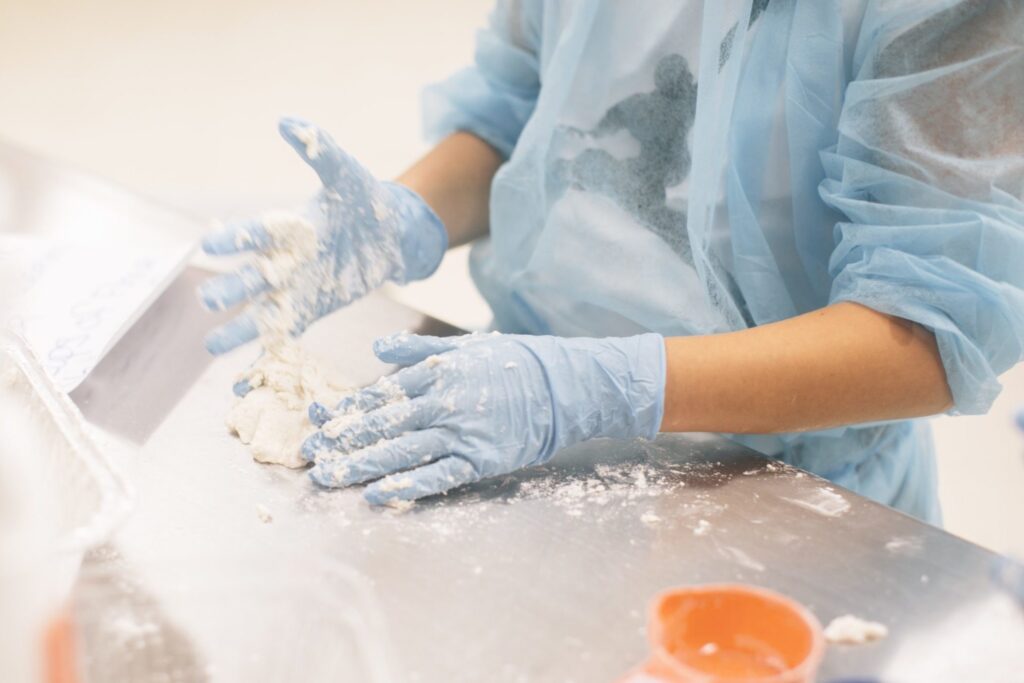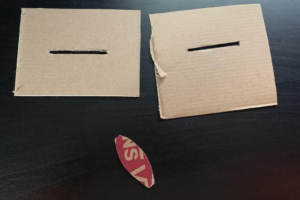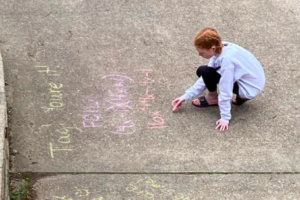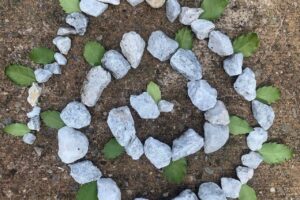In the span of a few short weeks, COVID-19 has transformed our region’s education system: schools closed, out-of-school learning programs suspended, state-wide testing and requirements waived. Home has become every student’s new home base for learning.
Learners and their families are slowly carving out a new rhythm. The adjustment has been challenging, certainly. But it’s given us a chance to reassess what’s important and come face-to-face with how education must innovate to ensure learning is engaging, relevant, equitable, and accessible to every student.
Of course, some areas of learning are better equipped for remote instruction than others. Subjects like computer science and video editing and natural fits for online delivery. Science, engineering, and other aspects of STEAM, meanwhile, are often difficult to replicate online. They suffer from a lack of tangible, hands-on experiments and experiences.
Now, STEM educators across the region are facing the same problem: How to adapt STEAM instruction for distance learning.
Five schools shared their methods with us, for our next round of promising practices. Read on to see how they’re continuing hands-on learning, even while online.
Armstrong School District (ASD)
problem
How can educators adapt hands-on STEAM instruction for distance learning?
solution
ASD turned to virtual labs, including those offered through the University of Colorado’s PHet. This free platform offers simulations that engage students in data collection activities and deductive reasoning. Teachers using the site have access to materials that other teachers have posted and they can write content to accompany the simulations. ASD science teachers have utilized this site extensively.
ASD teachers have also video-recorded themselves doing data collection for lab activities. Even though this is not an ideal STEAM methodology, the teacher can highlight the relevant parts of the experience in the video. Teachers then post the video to YouTube and make it available to students. In turn, students can do projects at home and record a video to be viewed by teachers and their classmates.
outcome
ASD’s use of virtual labs is part of their larger, multi-step shift to distance learning. Before school shutdown, the district decided on Google Classroom as their learning management system of choice, as many of their students and faculty were already familiar with the platform. They also used Google Forms to survey teachers about their comfort level using Google Classroom, as well as their capability to teach remotely using this format. To fill gaps in training, the district turned to its in-house experts: Google-certified teachers from Armstrong High School helped create a plan for training and support for their fellow educators. As shutdown arrived, they also set up training groups based upon experience and comfort with Google classroom. They used two days for planning and training and then jumped into “school” on Wednesday, March 18.
After the launch of distance learning, teachers and administrators closely monitored the progress and responsiveness of students. To help with tech accessibility, teachers compiled a list of students that seemed to not have access to their class. ASD guidance counselors and the dean of students used this list to contact families, asking what they could do to support. If the family needed a device, they could come to the school to get one; if the family wasn’t connected to the internet, they provided them with a potential resource for free or reduced-cost access. If they couldn’t overcome hurdles in those ways, teachers prepared paper packets to help families with instruction.
Realizing that students will work on lessons on their own time, district administrators and teachers have also embraced the idea that live sessions are not always best, and that recorded demonstrations or small group discussions are as important as virtual office hours.
Teachers continue to have small support groups where they can share ideas and support each other. This has been a tremendous addition to their professional development, and the district hopes to continue this “community of practice” style of professional learning moving forward.
Deer Lakes School District
problem
How can educators adapt hands-on STEM instruction for distance learning?
solution
As a 1:1 district, Deer Lakes quickly rolled out SeeSaw for K-3 students and Google Classroom for students in grades 4-12. Teachers started sharing specifics regarding both platforms to help improve learning. They also adapted instruction, hosting live lessons and recording them, so students could watch them at a later time. Teachers also use live lessons as a way to stretch their creative muscles; for example, a recent kindergarten class hosted a show-and-tell and used the opportunity to teach students how to mute and unmute themselves while on a video chat platform.
outcome
District faculty and staff have come together to support each other and lead. Teachers are taking advantage of the many resources available from nonprofits and tech companies, and are trying new programs to great success:
- Fifth-grade science students are creating woodlands ecosystem food webs, which include producers, consumers, and decomposers and demonstrate the flow of energy through the web. Students have an option to use Google Slides or design a physical representation and submit pictures.
- In social studies, students were discussing the Bill of Rights pre-shutdown. Now, they are working on a new project in which they choose three rights and create a corresponding physical artifact to represent each right — like a video with Flipgrid, a collage, or an item built from Legos.
- Other students are constructing their own musical instruments in a cross-curricular project with language arts. Students are reading Bud, Not Buddy and had been studying the use of instruments by slaves. Now, they are working to design and build those instruments then demonstrate them using Flipgrid.
- Middle school STEM students were challenged to create a physical “chain reaction” using materials they have available. The teacher provided a video demonstration and later shared a compilation video of the students’ work.
Moving forward, the district also hopes to use their experiences to expand implementation of flipped learning. In addition, leaders are brainstorming a longterm practice of recording lessons, as a resource for students to reference after class or when absent.
Fox Chapel Area School District
problem
How can educators adapt hands-on STEM instruction for distance learning?
solution
The Fox Chapel Area School District proactively took several steps to ensure a continuity of education across its curricula, including in the STEAM and computer science disciplines.
First, to ensure equitable access to technology, the district provided more than 300 Chromebooks and Wi-Fi hot spots to families who requested them. Before the distribution, the district conducted an extensive technology audit to ensure that all students who needed a device to complete their online learning would have one.
Teachers in STEAM disciplines are using instructional videos to guide their students and also conduct experiments at their homes for students to view. Students are encouraged to duplicate those experiments and are engaging in maker activities, including designing anemometers from items commonly found around the house.
outcome
STEAM and computer science instruction have not only continued but expanded into new, place-based learning opportunities. To reach the wider community, computer science students at the district’s Fairview Elementary School designed cards in Wixie, which encouraged them to blend their artistic skills with English language arts concepts. The cross-curricular lesson culminated with students sending many cards to a local assisted living facility to brighten the days of residents, who are currently unable to see their families.
Plum Borough School District (PBSD)
problem
How can educators adapt hands-on STEAM instruction for distance learning?
solution
PBSD created a comprehensive Continuity of Education Plan to continue with full instruction during the school closure. Staff participated in two days of professional development on March 25 and 26 to prepare for remote learning through Google Classroom beginning March 30. The district was 1-1 in grades 5-12 and we recently deployed Chromebooks to their 4th grade. K-4 teachers rolled out their instruction and assignments through their Google Classroom as well.
outcome
A month into distance learning, educators and students are using creative ideas to continue hands-on learning in science, technology, engineering, and math at home:
- Elementary students are conducting chemical experiments with common household items such as salt, vinegar, pennies, food dye, hot/cold water, and paper towels/napkins. They are learning to use the scientific method to form and test hypotheses and make observations. Junior high life science students are creating stop-motion animation, showing the life cycle of a virus, using Chromebooks. High school physics students are using PhET Labs to do virtual experiments with DC circuits.
- Other elementary students completed a virtual escape room created by one of the school’s librarians and are creating digital images to interpret poetry. Junior high students are designing an excursion to a continent discussed in their World History class; they are using Google Suite and other applications to create components like a proposal and itinerary, an expense report, and an infographic. High school computer science students are creating various coding projects using platforms such as Unity, Phaser, and Javascript, and coding virtual robots in Python using CoderZ and RoboMind Academy.
- Elementary students are engaged in family STEM projects like create-your-own invention, build a model of a building, create something useful out of recycled materials in the house, and build a marble run. In addition, an elementary STEM teacher and librarian are collaborating on a project that asks students to build a 3D scene from a book the students are reading out of upcycled materials. Junior high students are using Tinkercad to design a custom house, while high school students are competing in a “Ship a Chip” competition, where they have to design packaging to mail two potato chips to a friend and then see if their chips survived the journey. In the high school’s Materials Processing class, students are also learning about different types of joints and learning to create them out of materials they have at home.
- The music department is utilizing smartmusic.com, so students can learn a new piece of music and receive instant feedback on intonation and rhythm accuracy. Students are also working on virtual recitals in choir classes to create a virtual choir version of the school’s Alma Mater. Two percussion students worked on a multi-layered audio track of “Under the Sea,” using glasses, water, plastic knives, and Tupperware. The visual arts department created a virtual art show and competition where the entire student body could vote on the artwork submitted. Students in high school sculpture class are creating works of art based on the works of conceptual artist Christo, Abstract Expressionist sculptor David Smith, and Earthwork artist Robert Smithson using upcycled materials and materials only found in nature.
- Junior high school math students are engaged in a game of “math tag,” where one math teacher drives around the district writing math problems on students’ driveways. The students have to solve their problem and then tag the next person that the teacher visits. This teacher has visited almost 40 houses already!
Riverview School District
problem
How can educators adapt hands-on STEAM instruction for distance learning?
solution
Teachers mixed-and-matched online platforms to create varied online learning. Many high school classes began using Teams, building off of the schools’ foundation in Microsoft products. To fill gaps in training, teachers shared experiences with their peers and referenced education.microsoft. Teachers also started using platforms like Zoom, Buncee, YouTube, SeeSaw, Padlet, and Quizlet to deliver content and instruction. They have incorporated video into their classes and using online activities students can complete at home. For example, their video editing students are making videos depicting their days in quarantine.
outcome
Moving forward, the district hopes to provide even more teacher training and preparation for online classroom presence, plus greater technology access for students, especially younger students.



